#Indian rhino
Text

I have recently fallen victim to loving the Greater One-Horn Rhino, their puppy stare is just lethal
Some more practice pieces; I want to eventually make a bigger piece for my mentors before my internship is over!! ;w;
#their heads are like really weird horses#and their slobber is something special#gotta love rhinos#jomadis#art#my art#traditional#animal#animals#nature art#animal art#sketch#rhino#greater one horn rhino#zoo#zoology#Indian rhino
86 notes
·
View notes
Photo

Maiden & unicorn
44 notes
·
View notes
Photo

インドサイ by 田名部@tanabeai
216 notes
·
View notes
Text

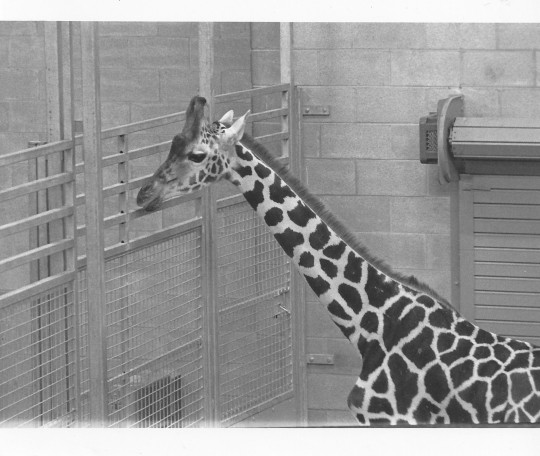


woe, ungulate photos be upon ye
#photography#wildlife photography#black and white#bw photography#ungulate#okapi#indian rhino#reticulated giraffe#film photography#aesthetic
4 notes
·
View notes
Text

Greater One-Horned Rhino (Rhinoceros unicornis)
taken at the Denver Zoo in Denver, Colorado
status: vulnerable
These big animals are also known as the Indian Rhino but an easy way to identify them is by their single horn that can grow to be 8 to 25 inches in length!
#Greater One-Horned Rhino#Greater One Horned Rhino#Indian Rhino#Rhinoceros unicornis#animal#wildlife#denver zoo#denver#zoo#colorado#photo#photography#canon#canon 6d mark ii
11 notes
·
View notes
Text
you know how marco polo saw an indian rhino in sumatra and, instead of thinking, "perhaps this is completely different creature than the one I am thinking of," he just went "oh man, we really got our depictions of unicorns wrong" ? monsignor pruitt and the horrifying murderous blood drinking "angel" in the cave.
#midnight mass#also that passage about him seeing a 'unicorn' and going#my god they're ugly as shit#is like. my favorite thing.#marco polo was like well it's got one horn sooooo#pruitt was like well it does weird shit and it's got wings soooooo#also before anyone points it out#unlike other types of rhino the indian rhino only has one horn
868 notes
·
View notes
Text
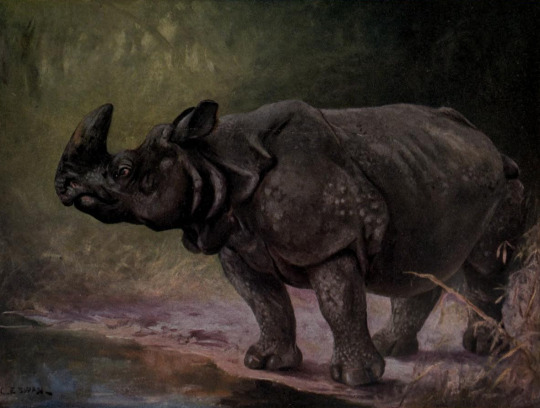
Indian One-Horned Rhinoceros by Cuthbert Edmund Swan. From Wild Beasts of the World, Vol. Two. Written by Frank Finn, published in 1909.
Internet Archive
128 notes
·
View notes
Text
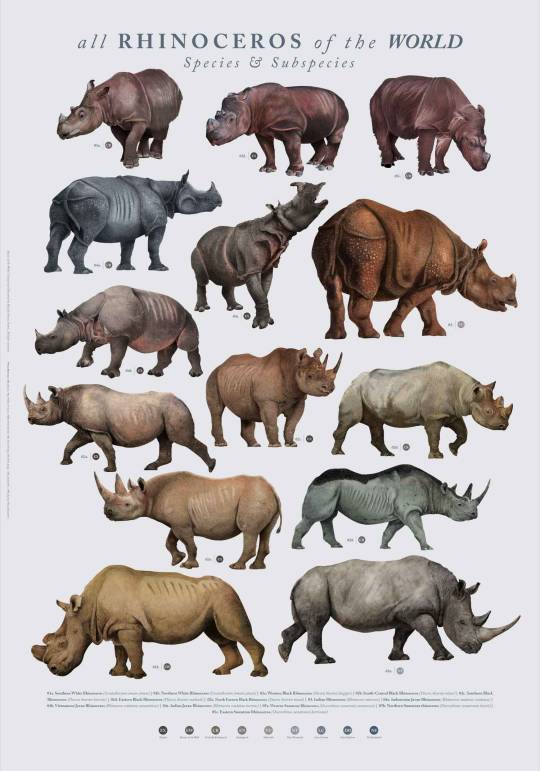
An illustrated poster with all the rhinos of the world. Is the most complete compilation because includes all the subspecies, even the ones that are extinct.
It took time to search, compile and corroborate information. Some of the extinct subspecies' quality photographs weren't good and some others didn't even have, so I had to base them on written descriptions.
Moreover, illustrating a rhino is not easy. Is a meticulous job. A rhino has a lot of textures that take time to do if you want to make it believable (an average of 10 hours per rhino). it drained me and I found myself exhausted at the end. But worthed it. I love animals, I love rhinos and I love to study them and share what I learned.
If you are interested in purchasing this poster, click on the link below:
Store
_________________________________
Thanks for the likes, shares, and love. Have a good week and get drunk
#rhinoceros#white rhino#black rhino#indian rhinoceros#javan rhinoceros#sumatran rhinoceros#illustration#scientific illustration#drawing#illo#wild animals#wildlife#animals#mammals#animal#artist on tumblr#conservation#extinction#extinct species#nice poster#20th century
430 notes
·
View notes
Photo
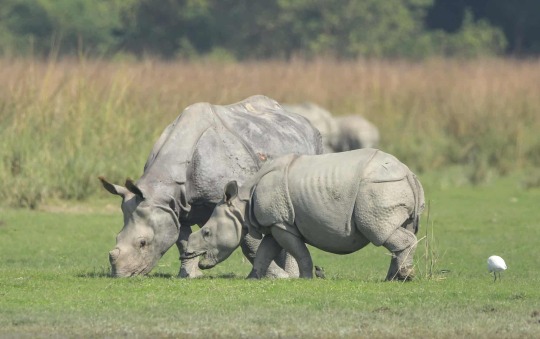
An Indian one-horned rhino and its baby graze in the Pobitora Wildlife Sanctuary in Morigaon district of India’s northeastern state of Assam.
Photograph: Xinhua/REX/Shutterstock
#xinhua#rex#shutterstock#photographer#indian one-horned rhino#rhinoceros#animal#mammal#wildlife#nature#pobitora wildlife sanctuary#morigaon district#india#assam
37 notes
·
View notes
Note
we HAVE unicorns, they're all different levels of engagement

which unicorn is your favorite?
How quickly I forget the humble unicorn...
Gotta go with the greater one-horn rhino/Indian rhino (it's even called Rhinoceros unicornis) I like their ear shape, and I like when a mammal is semi-aquatic.

silly guy
#fortunately the Indian rhino isn't endangered#also that pic of the Sumatran rhinoceros has the brush in front of it- I thought the poor thing just had a dip#like a cartoon character getting squished in one part of their body#personal pig#chimeramoth
9 notes
·
View notes
Text
It’s Clara! (probably) 🦏
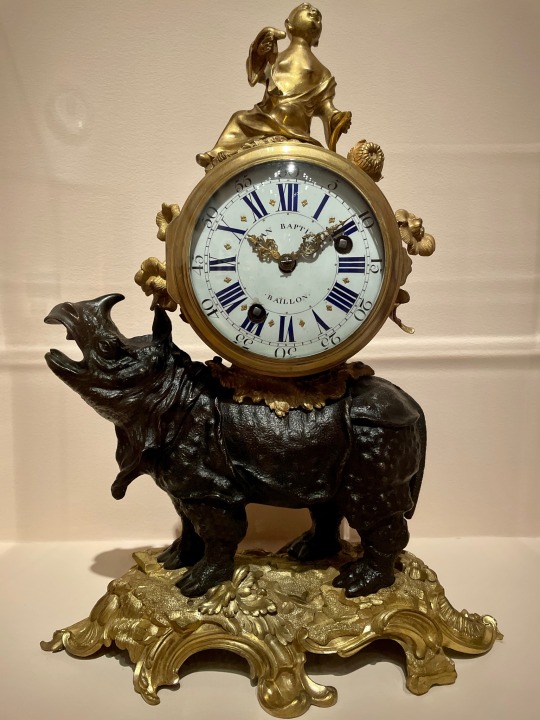


Jean-Baptiste Baillon, clockmaker (French, d. ca. 1770)
Attributed to Jean-Joseph de Saint-Germain,
bronze maker (French, 1719-1791)
Mantel Clock, after 1749
Virginia Museum of Fine Arts display
“This mantel clock exemplifies the exuberant Rococo style of the mid-18th century that delighted in the apparent novelty and exoticism of Asian cultures as they were perceived in the popular European imagination.
Ménagerie clocks featuring models of unfamiliar beasts from Africa and Asia became highly fashionable collectibles in the 1740s. Though the rhinoceros was known in Europe as early as the 16th century, it was not until a live Indian rhinoceros named Clara was brought to the Netherlands in 1741 that the animal became a widely recognized marvel. Clara was exhibited throughout Europe for nineteen years, delighting average citizens and courtiers alike. In 1749, she arrived in Paris, where she inspired drawings by many artists and studies by scientists. The model for this clock was likely based on one of these renderings.”
#animals in art#european art#museum visit#rhino#rhinoceros#Indian rhinoceros#French art#18th century art#clock#bronze#sculpture#decorative arts#metalwork#Clara the Rhinoceros#VMFA#Virginia Museum of Fine Arts
22 notes
·
View notes
Text

#Indianelephant, #rhinoceros #Horn #Wildlifetrafficking #BigFive #Savannah #TuskProtection #Nationalparks #Wildlifereserves #Biodiversity #Africanwildlife #Asianwildlife #Wildlife #sanctuaries #Elephant #calves #Rhinocalves #Wildlifepoachers #Conservation #efforts #Wildliferehabilitation #Antipoaching #measures #AnimalRights #Wildlifedocumentaries #Wildlifephotography, #Elephantbehavior #rhinobehavior #Conservation #organizations #Wildlifetracking #Wildliferangers #Wildlifeeducation #Ecotourism #Conservationbiology #Wildlifehabitats #Elephant #intelligence #Rhinointelligence #Wildlifeextinction #Wildlife protection #lawsAnimal #welfare #Wildliferesearch #Wildlife migration #Wildlife #populationtrends
A matchup between an elephant and a rhinoceros would be quite the spectacle! Both are massive animals with unique features and strengths.
In terms of sheer size, African elephants are the largest land animals, weighing several tons and standing up to 13 feet tall at the shoulder. Rhinoceroses, on the other hand, are smaller but still formidable, with the largest species, the white rhinoceros, weighing around 2.2 to 3.6 tons.
In a confrontation, the outcome would likely depend on various factors such as the species of elephant (African vs. Asian), the species of rhinoceros (white, black, Indian, etc.), the individuals involved, and the circumstances of the encounter.
Elephants are known for their intelligence, social structure, and formidable strength. Their tusks can be used as weapons, and they have powerful trunks that can push over trees and fend off predators.
Rhinoceroses, while not as agile or intelligent as elephants, possess thick, armor-like skin and formidable horns. Their charge can be incredibly powerful, and they have been known to flip vehicles in confrontations.
youtube
#Elephant#Rhino#Wildlife#Conservation#Safari#Endangered species#Ivory#Poaching#Habitatloss#Africanelephant#Indian elephant#rhinoceros#Horn#Wildlifetrafficking#BigFive#Savannah#TuskProtection#Nationalparks#Wildlifereserves#Biodiversity#Africanwildlife#Asianwildlife#sanctuaries#calves#Rhinocalves#Wildlifepoachers#efforts#Wildliferehabilitation#Antipoaching#measures
2 notes
·
View notes
Text
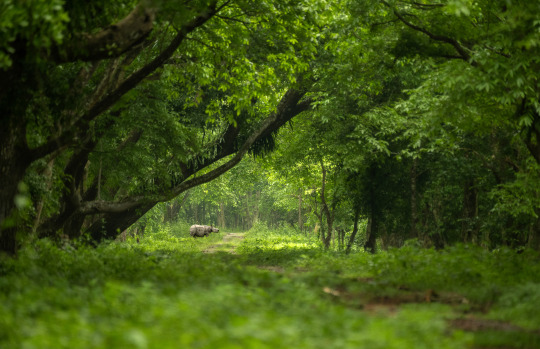
Rhino in lush green habitat - Kaziranga National park
#nature#best indian wildlife photographer#wild#indian wildlife#indian wildlife photographer#indian wildlife safari#wildlife photography#bird#wildlife#nature photography#rhino#kaziranga photo tour#kaziranga#wildlife photographer#animal photography#wild animals#big animal#animals#cute animals#baby animals
7 notes
·
View notes
Text

Indian rhinoceros, 1990
Larry Oglesby Collection
The Claremont Colleges Digital Collections
3 notes
·
View notes
Text

Greater One-Horned Rhino (Rhinoceros unicornis)
taken at the Denver Zoo in Denver, Colorado
status: vulnerable
At the beginning of the 20th century there were only 200 of these wild animals left. Through conservation they were able to bring their numbers up to around 3700 today!
#Greater One-Horned Rhino#Greater One Horned Rhino#Indian Rhino#rhinoceros#Rhinoceros unicornis#denver zoo#denver#zoo#colorado#photo#photography#canon#canon 6d mark ii
3 notes
·
View notes
Photo
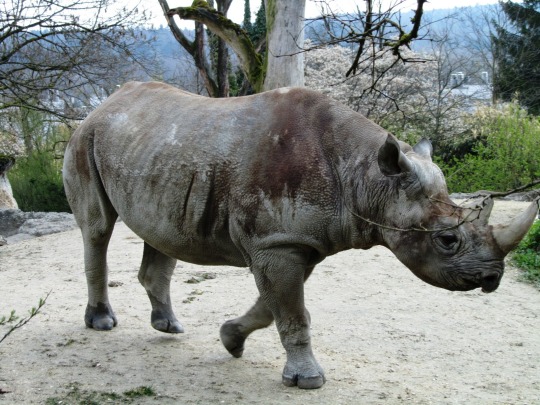
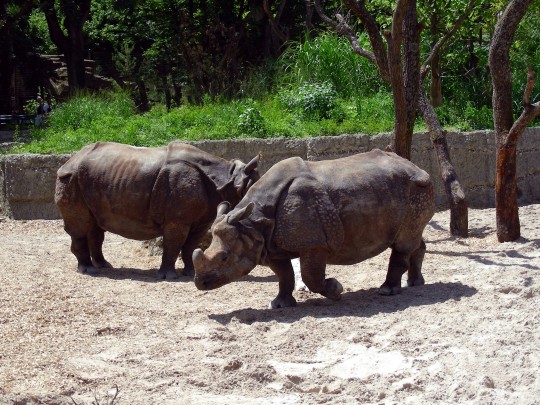




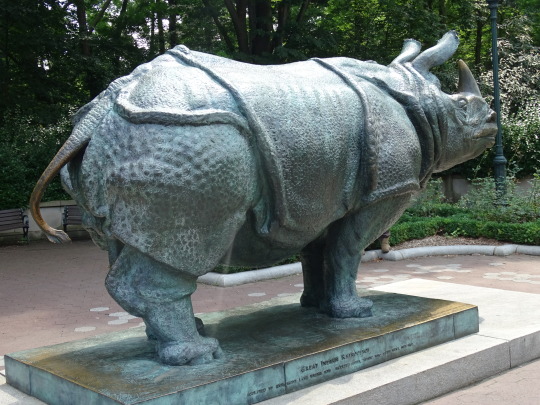
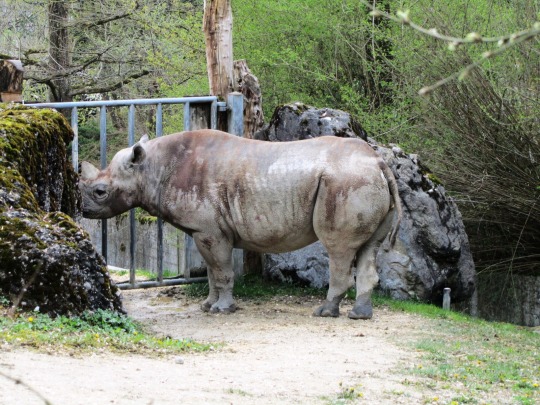


Save The Rhino Day
Save the Rhino Day, celebrated globally on May 1, is a day centered around raising awareness of the rhino’s plight in the world, and highlighting ways to help this incredible animal. This day is especially important given the current devastating statistics — on average, one rhino is poached somewhere in the world every 22 hours. On this day, various animal rights organizations, non-profit companies, zoos, animal activists, and other concerned groups provide opportunities to encourage more rhino conservation efforts from people around the world.
History of Save The Rhino Day
To trace the origins of the Rhinoceros, we’d have to go back some millennia — almost 56 million years ago, to be precise. That’s when the first ancestors of the modern Rhinos roamed the planet. They were more horse-like in structure and had no horns. Old rhino bones found from this period in North America show a gradual evolution from this old horse-like structure into one more aligned with today’s rhino. Over these years, there were three distinct species that scientists think might be the ancestors of today’s rhinos. One of these was called the ‘running rhino,’ which was adapted for speed.
Another was more aquatic and resembled today’s hippopotamus. The last, most direct ancestors to the modern rhinoceros appeared approximately 25 million years ago and had multiple sub-species in their families. Of these, the wooly rhinoceros was one of the largest subspecies, weighing in at almost four times the size of the average African elephant, and boasting one-meter-long horns. This species inhabited a large area, from Siberia to the British Isles. These plant-eaters lived alongside the wooly mammoths, and have been found fossilized in ice and in cave paintings made during that period.
These rhinos only lived in Asia initially but began traveling to other places around 25 million years ago. Over time, these rhino ancestors roamed the continents, primarily living in Eurasia (Europe and Asia combined) and North America. However, the American rhinos went extinct sometime between 5.4 and 2.4 million years ago.
Rhinos have also featured in many Asian and African legends — they are the fire-stamping heroes in many stories from Burma, India, and Malaysia. According to these stories, rhinos appeared every time a fire was lit in the forest and would stamp out the flames. So popular is this tale that it even featured in a popular 1980 South-African movie named “The Gods Must Be Crazy.”
Unfortunately, these once-abundant creatures have lost out to human activity. Hunting, and now, poaching and habitat loss, have drastically reduced the number of rhinos across the world. Rhino horns are also integral to traditional medicine in many parts of Asia, with people believing it has mystical powers. Since 2007, there has been a sharp increase in poaching activity and illegal trade of rhino horns, to the extent that many subspecies of rhinos have been declared extinct and the entire rhino population is listed as ‘endangered’.
Save The Rhino Day timeline
1973 A Symbol of Queer Identity
Two Boston artists, Daniel Thaxton and Bernie Toale create a lavender rhinoceros as a symbol to increase awareness of gays and lesbians and put it in a series of subway posters.
2011 No More Black Rhinos
The Western Black Rhino — which used to live in Cameroon, Chad, the Central African Republic, Sudan, and South Sudan — is declared extinct because of excessive poaching.
2012 A Ray of Hope
For the very first time, a Sumatran rhino — the smallest of the rhino family — is born in captivity in the Sumatran Rhino Sanctuary in Indonesia; this miracle repeats in 2016, and then in 2022.
2018 A Sad Farewell
The world bids goodbye to the last known male northern white rhino; only two females survive to this day.
Save The Rhino Day FAQs
What day is World Rhino Day?
On September 22 each year, the global community celebrates the rhinoceros and explains what people can do to help them.
How many rhino species are there?
At present, there are five species of rhinos in the world — the white rhino and the black rhino (both found in Africa), and the Indian, Javan, and Sumatran (all found in Asia).
Are rhinos endangered?
The black, Javan, and Sumatran rhinos are still listed as ‘critically endangered,’ while the entire species is classified as ‘endangered.’
How to Observe Save The Rhino Day
Learn about the rhinoceros
Visit a rhino
Help save the rhino
Uncover more interesting information about this magnificent animal. Watch documentaries featuring the rhino, read books and other literature about them, and discover more studies and research that show just how the rhino lives.
Why not go see a rhinoceros in real life? Check out rhinos at a local zoo or plan a trip to visit rhinos in the wild.
Research the efforts various groups make towards saving the rhino, and check out what you can do to help. These could include online volunteering services, donations of funds, and more.
5 Fun Facts About The Rhinoceros
The rhino communication method
They don't have 20-20 vision
How the white rhino got its name
Their horns are like our nails
And still, people steal their horns
Rhinos make funny sounds — like snorting, sneeze-like sounds, and even honking — and use their bodily waste to 'speak' to other rhinos.
Rhino eyesight is notoriously poor, so much so that if an animal only 100 feet away — in an open space, too — stood motionless, the rhino wouldn't be able to spot them.
This rhino isn't actually white — English explorers mistook the Afrikaans 'wyd,' which refers to the huge girth of this animal, as 'white' and the name stuck.
Rhino horns are made up almost entirely of keratin, which is also the protein found in human hair and nails.
Even as rhino horns are proven to have no health benefits, signs in museums — like the National Museum of Scotland — notify visitors that the horn on display is a replica, as the real one has been stolen.
Why Save The Rhino Day is Important
It helps increase awareness
Creating safe havens for rhinos
Building a rhino-loving community
Rhinos are becoming increasingly rare in the wild, and only continuous efforts to raise awareness, like celebrating Save The Rhino Day, can help this endangered species. Do your bit today to support rhinos.
The spike in awareness such days provide also subsequently raises the amount of help being offered to save the rhinos. These increased efforts could help secure various safe and protected spaces for the rhino to survive and thrive.
Conservation efforts have had a significant impact in the past — various subspecies of rhinos have seen their numbers gradually increase over the years as a result of these activities. After these celebrations, we are left with a passionate and motivated global community that wants to see the rhinoceros flourish in the decades to come.
Source
#Great Indian Rhinoceros by Katharine Lane Weems#Bronx Zoo#New York City#Indian rhinoceros#Zoo Zürich#Zoo Basel#Zolli#Lincoln Park Zoo#Chicago#USA#Schweiz#Switzerland#sculpture#outdoors#original photography#travel#summer 2018#vacation#day trip#Save The Rhino Day#SaveTheRhinocerosDay#SaveTheRhinoDay#1 May
2 notes
·
View notes